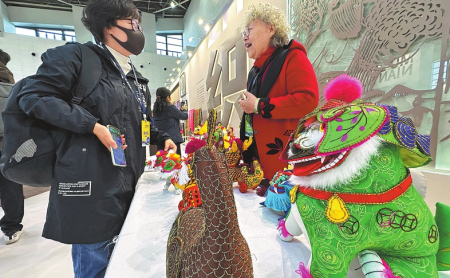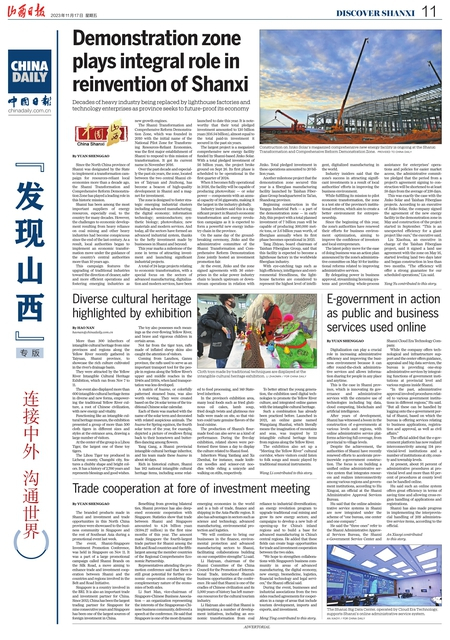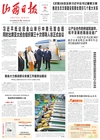Diverse cultural heritage highlighted by exhibition

Cloth toys made by traditional techniques are displayed at the intangible cultural heritage exhibition.Li Zhaomin/For China Daily
More than 300 inheritors of intangible cultural heritage from nine provinces and regions along the Yellow River recently gathered in Taiyuan, Shanxi province,to showcase the rich culture cultivated in the river's drainage basin.
They were attracted by the Yellow River Intangible Cultural Heritage Exhibition,which ran from Nov 7 to 11.
The event also displayed more than 600 intangible cultural heritage items in diverse and new forms, empowering the traditional Yellow River culture,a root of Chinese civilization, with new energy and vitality.
Functioning like an intangible cultural heritage museum, the exhibition presented a group of more than 500 cloth tigers in different sizes and styles at the entrance area,drawing a large number of visitors.
At the center of the group is a Lihou Tiger,the largest one of these toy tigers.
The Lihou Tiger toy produced in Licheng county,Changzhi city, features a chubby shape and bright colors.It has a history of 2,700 years and represents blessings and good wishes.
The toy also possesses such meanings as the ever-flowing Yellow River,and brave and vigorous children in certain areas.
Not far from the tiger toys,rafts made of inflated sheep skins also caught the attention of visitors.
Coming from Lanzhou, Gansu province, the rafts used to serve as an important transport tool for the people in regions along the Yellow River's upper and middle reaches in the 1940s and 1950s,when land transportation was less developed.
A matrix of huamo, or colorfully patterned steamed buns, was also worth viewing.They were created based on the 24 solar terms of the traditional Chinese solar calendar.
Each of them was marked with the name of the solar term and decorated with related auspicious animals. The huamo for Spring equinox,the fourth solar term of the year,for example,depicted a picture of swallows flying back to their hometown and butterflies dancing among flowers.
Yang Gang,a Shanxi provincial intangible cultural heritage inheritor,and his team made these huamo in about 40 days.
Rich in historical culture,Shanxi has 182 national intangible cultural heritage items,including some related to food processing,and 149 State-level inheritors.
In the province's exhibition area,many local foods such as fried glutinous oil cakes,lamb soup, fried dough twists and glutinous rice balls were made on site,so that visitors could taste genuine flavors of the local cuisine.
The production of Shanxi's flour-made food can also serve as a kind of performance.During the five-day exhibition, related shows were performed three times a day to display the culture related to Shanxi food.
Inheritors Wang Yanfang and Xu Zhenhai,for instance, made knife-cut noodles and scissor-cut noodles while riding a unicycle and walking on stilts,respectively.
To better attract the young generation, the exhibition used digital technologies to promote the Yellow River culture, and integrated online games with the intangible cultural heritage.
Such a combination has already been practiced before. Launched in 2021,an online game named Wangxiang Shanhai,which literally means the imagination of mountains and seas,was inspired by 12 intangible cultural heritage items from regions along the Yellow River.
The exhibition also set up a "Meeting the Yellow River" cultural corridor,where visitors could listen to folk songs and music played by traditional musical instruments.
By Hao Nan
haonan@chinadaily.com.cn
Wang Li contributed to this story.











